From the moment you set foot inside Tokyo Station, you’ll see that it’s full of travelers, train lines, and souvenir shops. But what might not be so obvious is that it’s also full of secrets.
Well, we suppose you could argue that they’re not secrets so much as things almost nobody notices, despite their deep significance. That’s not to say that people are inattentive, though. The first one we’re looking at today, for example, is hiding in plain sight near the ticket vending machines right outside the gates at the station’s Marunouchi South Entrance.

▼ Can you see it?
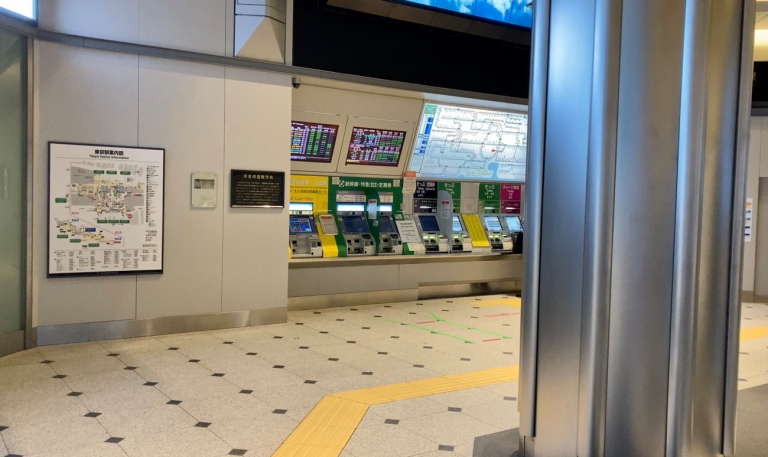
Inlaid in the floor tiles is an unusual symbol, with a white hexagon inside a black circle. Most people don’t even realize it’s there, and those that do probably figure it’s some sort of marking for maintenance workers. Who it’s really of interest to, though, is historians, because the symbol marks the exact spot where one of Japan’s most shocking political assassinations took place.

The first half of the 20th century was an especially volatile time in Japanese politics, as industrialists and military leaders jockeyed to fill the power gap caused by the dismantling of the shogunate at the end of the Meiji Restoration. With Japan’s isolationist policy revoked and the common people removed from their status as subservient peasants, there was intense debate as to what direction the country should take in this new, wide-open era, and plotting a course that would please everyone was an impossible task for any politician, including Prime Minister Takashi Hara, who took office in 1918.
When Hara was at Tokyo Station on November 4, 1921, to board a train for Kyoto, a rail worker with right-wing political affiliations chose to express his disapproval for Hara’s conduct, with his belief that the prime minister was in the pocket of business conglomerates and his distaste for the politician’s push for universal suffrage among his grievances. He chose to communicate his displeasure by stabbing Hara with a knife in the right side of his chest, killing him almost instantly.
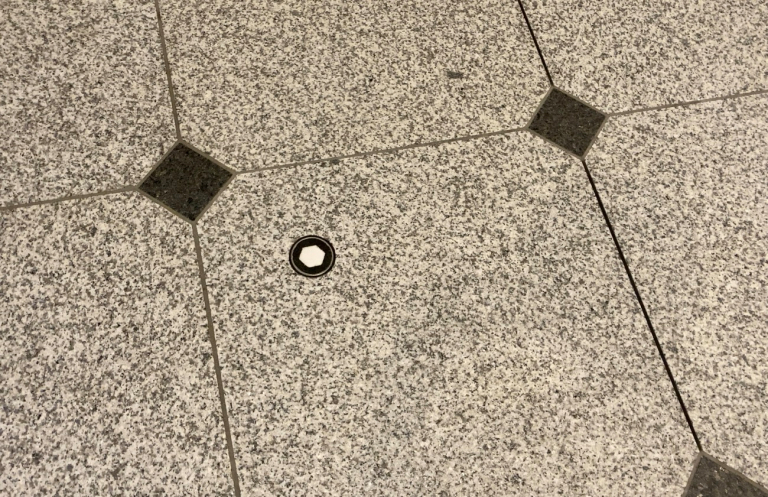
Moving on to the area inside Tokyo Station’s regular ticket gates, if you head towards the gates for the Shinkansen using the building’s Central Passage you’ll come to a short flight of stairs.
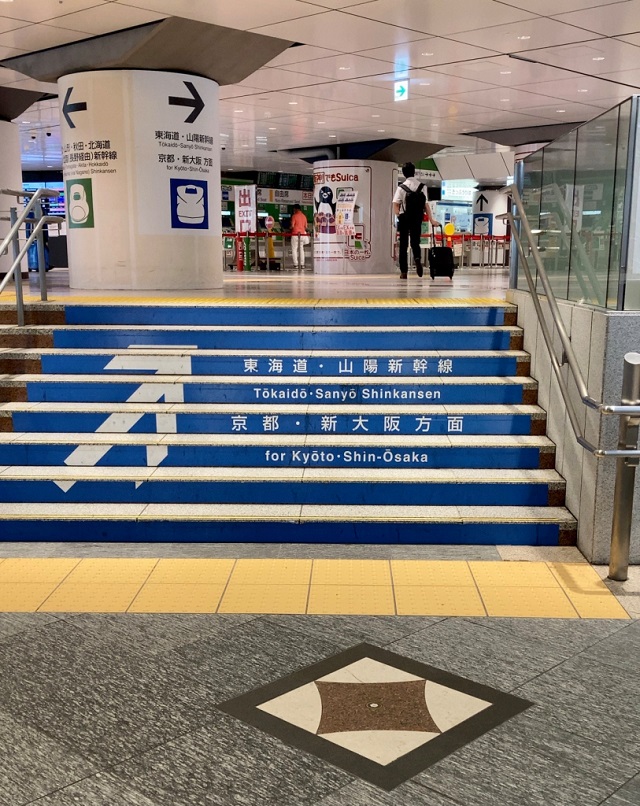
Once again, if you look down you’ll see a marking on the floor. This one is larger, making it look even more like some sort of maintenance hatch, maybe one designed by ninja taking a page from the Pokemon manhole cover playbook by decorating it with a throwing star pattern.

Actually, though, this is another place in Tokyo Station where someone wanted to kill the prime minister of Japan. This time the target was Hamaguchi Osachi, who began his term in 1929. Hamaguchi was also attacked by a right-wing assassin, following anger from the political faction over his unsuccessful economic policies and attempts to limit military expansionism.
Despite the shuriken-like motif on the floor marking, the assassin used a pistol, shooting Hamaguchi on November 14, 1930, while he was at Tokyo Station to board a train for Okayama Prefecture. A doctor was able to perform first aid and Hamaguchi was rushed to the hospital of Tokyo Imperial University (the present-day University of Tokyo) where an emergency surgery kept him alive, but he never fully recovered and died from lingering complications related to his injury the following year.
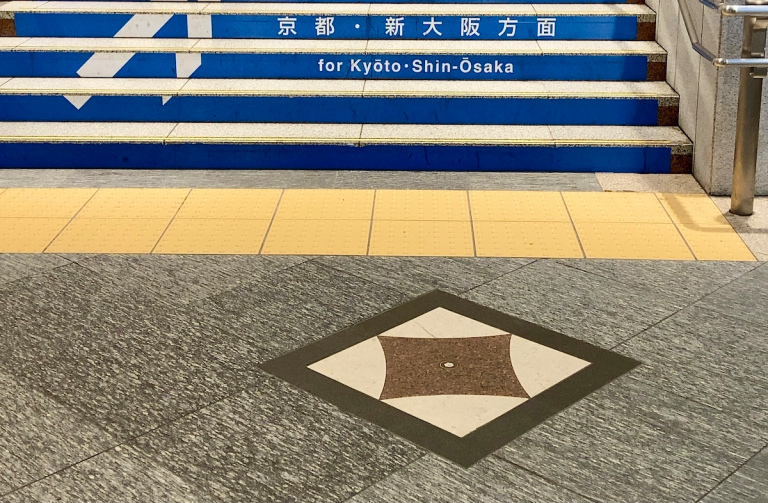
Both memorial markers are accompanied by Japanese-language plaques on the wall explaining their meanings, but their nondescript appearance means that few, if any, of the people hurrying to their train register that the signs are there, let alone stop to read them.
▼ The explanation plaque near the Hara assassination site (the arrow was added to the photo by us, and isn’t part of the actual station interior)
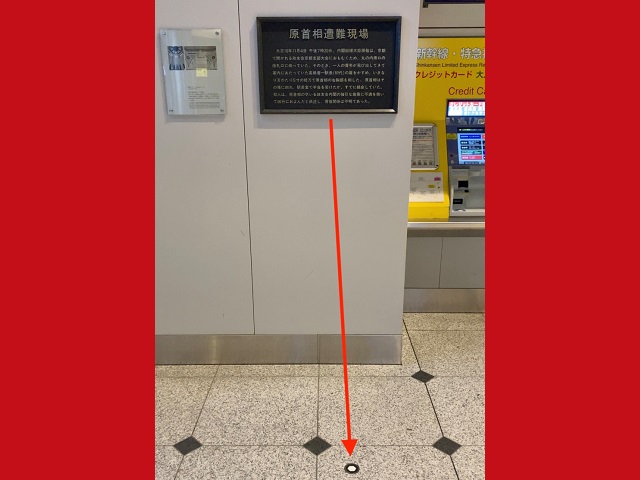
For those that do understand their significance, though, they’re a reminder of just how much history Tokyo Station has, and how fortunate Tokyoites are to be living in a much more stable society than their counterparts from less than a hundred years ago.
Read more stories from SoraNews24.
-- Can you spot the hidden cats at this Tokyo train station?
-- Japan’s Moonlight Nagara train service ends, leaving a hole in overnight rail travel
-- A visit to Japan’s train station that looks like a spaceport in the middle of nowhere【Photos】
© SoraNews24 Take our user survey and make your voice heard.
Take our user survey and make your voice heard.















16 Comments
Login to comment
BackpackingNepal
Interesting and Very Japanese.
snowymountainhell
How utterly insensitive to the recent slashing victims in Japan’s train cars.
Yrral
Why do you have too change many train to get to your destination in Tokyo,the service is fast ,but not been able to relax on your commute ,worrying about missing your connection
descendent
I've been commuting to Tokyo station for over a decade using that exact exit but never even noticed ... thanks for the interesting history lesson!
Express sister
No, ghosts don't exist.
moonbloom
And now we know why the government here is dominated by hawkish conservatives (they were also re-instated to power by Occupation authorities).
moonbloom
And now we know why the government here is dominated by hawkish conservatives (they were also re-instated to power by Occupation authorities).
Mocheake
Pretty interesting article.
Desert Tortoise
Hard to imagine today a national leader walking in public alone and using a subway instead of a motorcade or helicopter.
KariHaruka
When you do the same commute every day, it all runs like clockwork.... I am so used to navigating around Tokyo Station and Shinjuku station, it would now surprise me if I ever got lost in either station.
ebisen
Yrrall:
Haven't you heard of the "own track" JR service? On top of having the best, fastest and cleanest (by a large margin) metropolitan transportation network worldwide, Tokyo also offers the so called "own tracks" service. In order to avoid having to change trains, if you call them in advance and request it, JR will actually lay down train tracks from Tokyo station right to your destination, just for you! This way you don't have to change even once. Try it next time!
ebisen
... And yeah, Tokyo station offers a lot, I used to commute daily through it until I got a good map in my head. Some of the best restaurants, shops are in there, and of course, one could buy beer or omiyage from all over Japan. Some of food items sold are special releases only for Tokyo station. But if you're a first time traveler, the station will feel like a labyrinth for sure :).